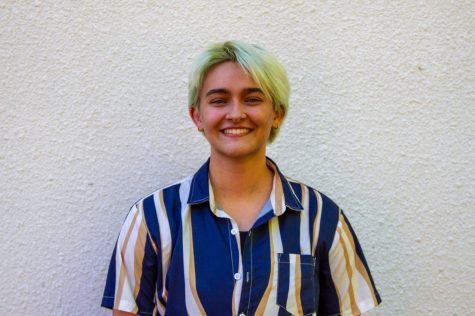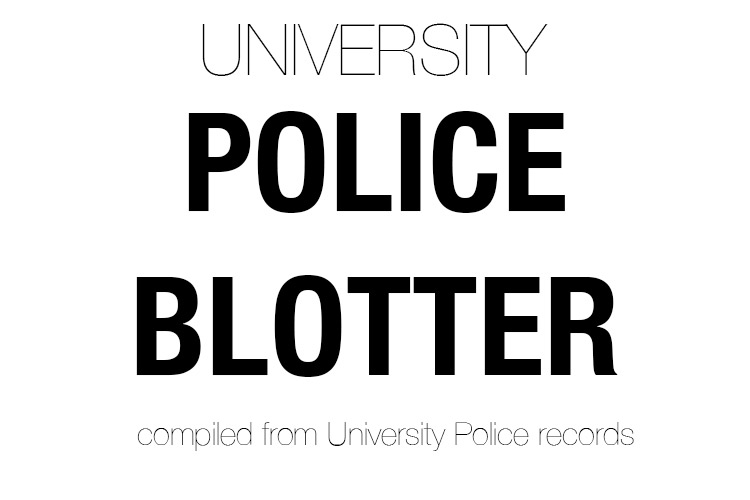Police Blotter
Bats, beverages and bad burnings
Photo by Submitted
The following information was obtained from the UW-Eau Claire Police Department records.
Bat bogey
An officer was contacted by a female resident assistant from Marilyn Kaarlgard Hall on Thursday, May 2 at 7:04 p.m.
The resident assistant said there was a rogue bat in the women’s bathroom on the ninth floor of the residence hall. She said she had already evacuated the bathroom prior to calling the officer.
The officer asked the resident assistant to get a box with a lid ready before the officer arrived. Upon arrival, the officer made contact with the resident assistant outside of the women’s bathroom on the ninth floor.
The resident assistant told the officer she had been notified of a single bat “terrorizing” female residents who entered the bathroom just prior to calling.
She said no female residents had been bitten by the bat, and the bathroom had been evacuated. She also added that no one had touched the bat or come into contact with it.
The resident assistant said the bat was last seen staring down those who entered near the main entrance of the women’s bathroom. The officer then took the box and entered the bathroom.
After clearing the bathroom, the officer located the bat resting on the floor of a shower stall.
The officer was able to take the bat into custody without incident and transported the bat to Putnam Park where it was released back into “its natural habitat.”
Autoclave accident
An officer responded to Phillips Science Hall on Thursday, May 2 at 6:50 a.m. to assist the Eau Claire Fire Department regarding a possible air quality issue in room 322.
The officer met with a second officer at 7:05 a.m. Officer 2 had been dispatched by the communication center to assist the ECFD on an unknown issue.
Officer 1 contacted the facilities office and informed them that the fire department was at the building. Officer 2 then cleared from the area.
A member of Loss Prevention and Safety arrived on scene and spoke with officer 1. She said there had been an issue with an autoclave used to dispose of biological waste the day prior.
The LPS member said a student had accidentally inserted chemical waste into the autoclave and initiated a burn cycle, but the burn cycle had been stopped prior to completion.
The LPS member was made aware of the issue at about 2 p.m. on the same day. She spoke to people familiar with autoclave accidents and they suggested she let the machine sit unused until Thursday morning.
She and Officer 1 then entered Phillips.
ECFD personnel and a laboratory manager were already at room 322. They had tested the air quality in room 322 and room 322A, where the autoclave is located in.
The air was declared safe and they proceeded to discuss options on how to open the autoclave and dispose of the waste.
Members of Facilities arrived at the room and assisted in opening and venting the autoclave. ECFD personnel again tested the air quality, which was confirmed to be safe.
ECFD then cleared from the area and the LPS member said she would coordinate the removal and disposal of the waste.
Officer 1 then cleared from the building.
Shots pulled in Sutherland
Two officers were dispatched to Sutherland Hall on Tuesday, April 30 at 9:57 p.m. for a check-person case.
Upon arriving, the officers met with the complainant — a resident assistant — who said she had been notified by another resident assistant that there were people sitting on the ledge of a window on the fourth floor.
The complainant went to the necessary room and made contact with the resident. She then noticed a large number of females leaving the area of the room and contacted her hall director.
The hall director asked the complainant to call the police to speak with the residents. The complainant said the residents of this room have caused problems with housing staff, previously.
Officer 1 requested a written statement from the complainant, to which she agreed. The officers then tried to make contact at the room. As Officer 1 approached the room, he was able to smell the odor of intoxicants.
Officer 1 knocked on the door several times before a male resident opened the door. Officer 1 identified himself and the reason for contact, then requested to enter the room.
Subject 1 hesitated to let the officers enter the room. He said the officers could enter the room, but stood in the doorway and continued to ask why the officers needed to go in.
The roommate of Subject 1 then came to the door as well.
As officer 1 stood in the doorway, the odor of intoxicants became greater. Subject 1 said, if the officer were there for the window issue, it was resolved and it wouldn’t be a further issue.
Officer 2 said they were there to talk to them about the window issue as well as the strong odor of intoxicants that were coming from the room. Subject 1 then consented to the officers entering the room.
When the two officers entered the room, officer 2 noticed a first female subject hiding something under a desk. Officer 1 observed a bottle of vodka on the floor and a bottle of Jim Beam near the window.
Officer 1 collected identifications from the subjects in the room and identified the other two female subjects. When he asked about the odor of intoxicants, subject 2 said no one had been drinking.
Officer 1 then proceeded to ask the other individuals in the room, and all subjects confirmed they had not been drinking.
When subject 3 answered the question, Officer 1 observed that her eyes were glossy and her speech was very slurred.
Officer 1 asked who owned the bottles he had observed upon entry to the room, and Subject 1 said they were his.
Officer 1 asked for the subjects to be honest with him because it was obvious that they had been drinking in the room. All subjects then admitted to drinking alcohol in the room.
Subject 3 became defensive and began to argue that she should not receive a citation. Officer 2 then began administering Preliminary Breath Tests to the subjects in the room.
Officer 1 asked how much each person had to drink that night. Subject 3 said she had consumed two shots of vodka and her PBT showed a result of .15.
Subject 4 said she had consumed two shots of vodka and her PBT showed a result of .03. Subject 2 reported he had consumed 3.5 shots of vodka and his PBT showed a result of .05.
Subject 1 said he drank four shots of vodka and his PBT showed as .06. Finally, subject 5 said she drank two shots of vodka and her PBT came up as .06.
After receiving all of the results from the PBTs, officer 1 returned to his squad car and cited the subjects for underage drinking.
While officer 1 was completing this task, officer 2 requested all of the alcohol in the room be brought out and disposed of. Officer 2 said a 1.75 L bottle of Svedka Vodka, ⅙ of a 750 mL bottle of Jim Beam, two 12 oz cans Natural Light and quarter of a 1.75 liter of Seagram’s Canadian were brought out.
Officer 2 observed that the object subject 3 had hidden underneath the desk was the bottle of Seagram’s Canadian. He said all of the alcohol was to be dumped into the custodial sink.
Officer 2 then began to explain the citations and the Eau Claire County Alcohol Offender program to the individuals, and answered any questions the subjects had.
Officer 1 then returned to the room and issued and explained the citations to the subjects and answered any additional questions.
The officers returned to the hall director’s office to collect the complainant’s written statement and spoke with the hall director. Then the two officers cleared.
Spierings can be reached at [email protected]

Timothy Spierings is a fourth-year Spanish and journalism student. This is their eighth semester on The Spectator staff. They enjoy trying all types of new foods and listening to new music artists and are currently trying to learn the bass guitar.

